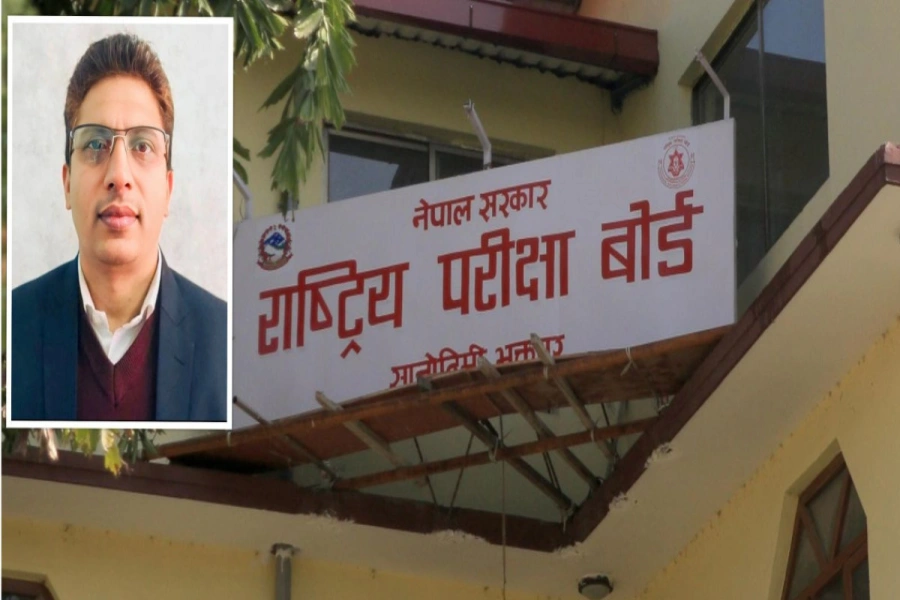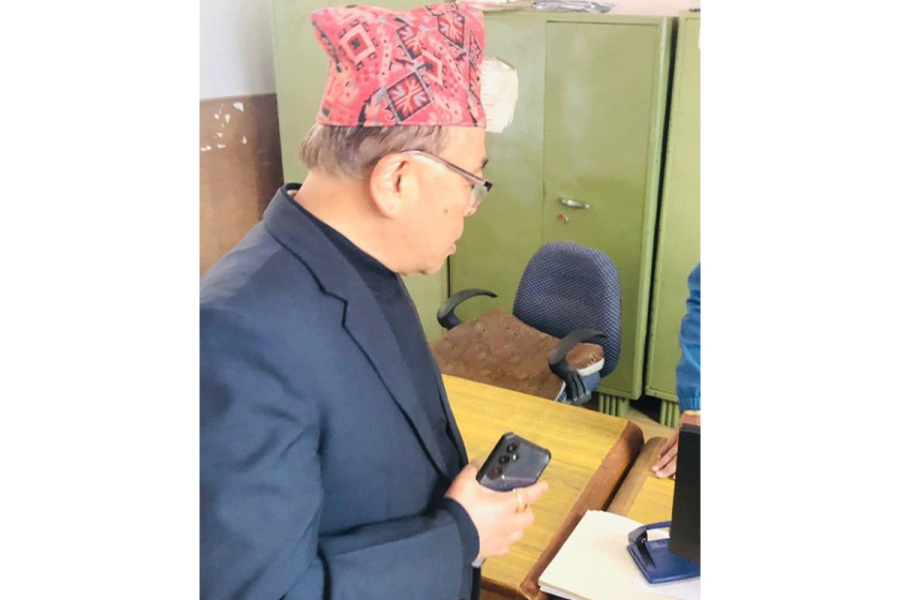The largest glass bead sale in Nepal takes place in the hidden, tiny lanes of Indrachowk near Ason, the center of historic Kathmandu. Shiny, sparkling glass beads and jewelry fashioned of them are found in abundance in the busy Potey Bazar of Indra Chowk, dangling exquisitely
within those stalls. The narrative of these beads and the bead makers are often overlooked amongst the bustle since the customers are primarily women. They’re generally too busy to give instructions to the male bead makers to create an elaborate pattern of their jewelry as per their desire on the spot.
However, Pratibha Pant, a 22-year-old debut documentary filmmaker, became curious as per the observation in the stories of this bead since she was not a busy shopper, but an acquaintance on the bead-buying trip with her mother. Her curiosity was turned into a short documentary film named Bearer of Glass Beads which was screened at Doc-Talk by Gauthali Entertainment at CDC Cinemas, Sundara, Kathmandu. It was previously screened at the 20th Kathmandu International Mountain Film Festival (KIMFF) on 12th December 2022 as well.
Colorful beads colorful smile

While the world is battling in the name of religion, these small alleyways of Indrachowk have their legacy of religious tolerance that dates back more than a century. The glass beads that are regarded as auspicious are primarily worn by Hindu women; its retailers are Muslims, and its manufacturers are Christians; it is imported from the Czech Republic, Japan, and China. Hindu marriages are incomplete without ‘potey’. While Brahmin/ Chettri married women wear ‘potey’ from the day the groom puts it on her, ‘potey’ is also famous amongst other communities like Gurungs, who wear them during occasions like Lhosar.
It is certainly a paradox that what is to be worn and embellished by women, is not allowed to be crafted by these Muslim women of Indrachowk since Muslim women are not permitted to visit Indrachowk without the presence of their man. Therefore, women who wish to work with glass beads are undeniably bound to do it from home, and their jobs involve threading glass beads. Nevertheless, there are numerous accounts of men bead makers who began this path after their mothers taught them how to weave and put necklaces together.
This short film's narrator is a glass bead itself, which is personified by the essence of the documentary. It narrates its journey and observances while being adorned around women’s necks. The director specified that she deliberately made sure to use a women’s voice as the bead’s narrator, in order to invoke the irony of gendered restriction that revolves around the legacy of beadwork. The glass bead describes how it has been delicately observing, from generation to generation, different heartbeats from the women who wear them and being intimately in tune with their emotions and their rites of passage.
Hence, creating an unbreakable bond with the women who wear it, despite being crafted by men within an incidental monopoly. Similarly to the auspicious colors, red, yellow, and green which used to rule the shelves in the past, especially during Teej or wedding season, in current times, other color schemes of glass beads are the object of women's attraction for various occasions. While the Tilhari, a type of glass bead jewelry carrying immense cultural significance, was in high demand in the past, women now express their freedom in the designs of glass beads which may be fashioned into jhumkas, crystal potey, naugedis, jantar etc.
The future of this industry worries the bead makers in Indrachowk. While this place is a magnificent example of culture and tradition being passed down from generation to generation, the upcoming members of the same family may not be interested in taking this legacy forward. More so, they aren’t encouraged to invest their time and skills in this business by their family because it is indeed, a regretfully depreciating industry. Among the few ones who are taking the legacy forward, they are only doing so as a side hustle, as they are also engaged in other jobs that are more lucrative. In addition to the business, the individuals who are still participating, are doing so with the incentive of appreciation and respect for culture and traditions, so the market has evolved into a family. This loss of traditional practice may also signify the fading of a harmonious relationship between Muslims that started living in Kathmandu in approximately the 15th century during the Malla dynasty, as well as the Newar natives who have, very beautifully, been undertaking their craftsmanship for decades now. When traditions are on the verge of dying due to a lack of attention and support from their own communities, the creators of Bearer of Glass Beads aimed to portray the current state of the legacy of glass beads in their 14-minute short documentary.
To summarize, the narration holds its own beauty in this documentary in many ways. The glass beads referred to in the documentary possess feminine qualities despite it is being created by the men in charge. The glass beads tend to dance beautifully to the rhythm of several ladies, loud and open despite it being created in a society of men that maintains that women must remain as the curtain. As per the director, it is also a symbolization of women supporting women, because there are multiple stories of men bead makers who take on their skills from their moms, and very few of the women. It is liberating for women to wear a range of jewelry, depending on their preferences and what suits them. A glass bead, which may seem like a simple adornment to emphasize physical attractiveness, is also a way of honoring the spirit of women and their uniqueness as individuals despite their backstory.
Numerous media outlets have written about glass beads in Indrachowk, but very few have done it from the viewpoint of women, therefore in this case, the director did a good job. The in-depth history, however, appears to be one of the documentary's weaker aspects. As a documentary willing to present the future of glass beads and how newer generations will take it farther, the inclusion of historical information would have been icing on the cake. The poetic touch given to the narration makes the glass beads and their stories more personal, an aspect of connection with those who wear it.
However, the business of glass beads has gone beyond the borders of Indrachwok. You can find glass beads in all major stores, not only limited to the small alleys in the heart of historic Kathmandu. The director wishes that this documentary will serve as an incentive for women to take into consideration the history of the jewelry that they wear, knowing they have the ability to sustain and flourish the glass bead’s legacy.







































